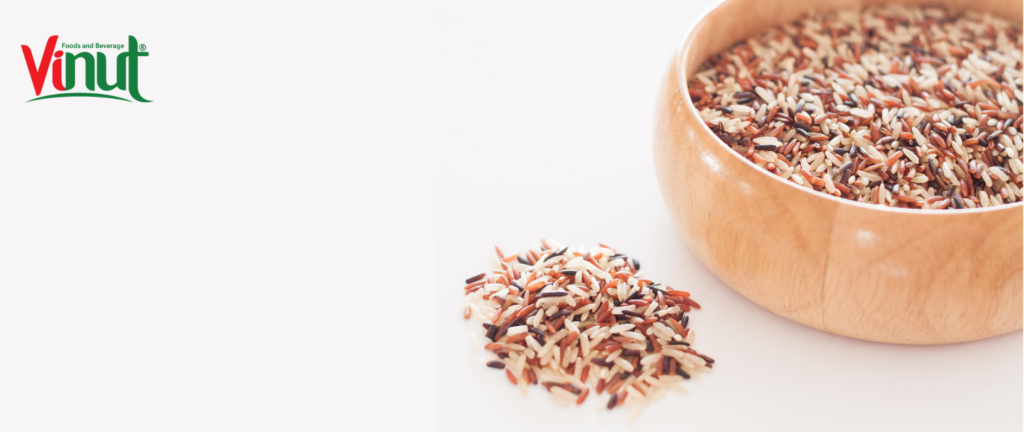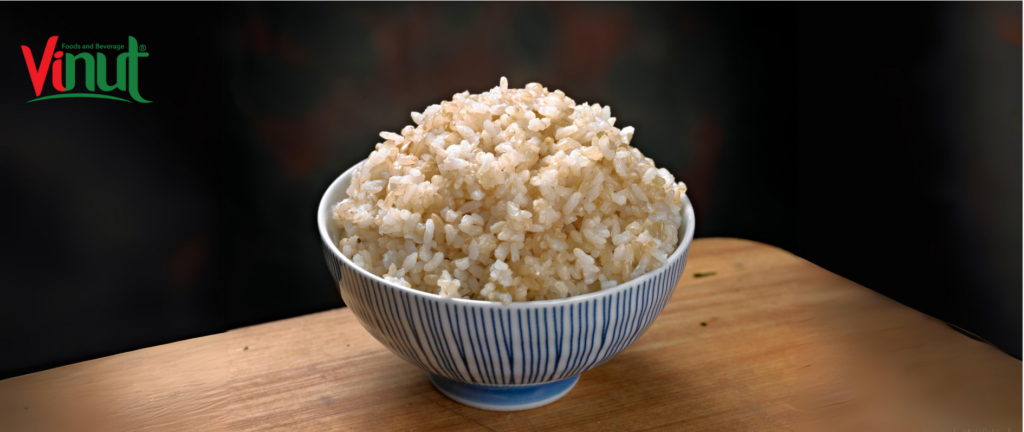Brown rice is one of the nutrient-rich foods that offers numerous health benefits. It serves not only as a rich source of energy but also contains essential nutrients that can improve cardiovascular and digestive health. Above all, this type of rice is known for its ability to help control weight and maintain blood sugar balance. Let’s delve into the details of the nutrients in brown rice and their positive impacts on cardiovascular and digestive health in this article.
Benefits of Brown Rice for Cardiovascular Health
Brown rice is not just a rich source of abundant energy but also a treasure trove of valuable nutrients for cardiovascular health. Especially, rice contains a significant amount of fiber, potassium, magnesium, and vitamins such as vitamin B and E, all of which are crucial factors in maintaining cardiovascular health.
Fiber, one of the main components of brown rice, plays a vital role in reducing bad cholesterol in the blood. Regular consumption of rice can significantly decrease the level of bad cholesterol in the body, thereby improving blood circulation and reducing the risk of cardiovascular problems such as angina and stroke.
Furthermore, minerals like potassium and magnesium also play a crucial role in maintaining stable blood pressure. Unstable blood pressure can lead to various heart health issues, and supplementing potassium and magnesium from rice can help regulate blood pressure and reduce the risk of hypertension-related diseases.
Moreover, the high fiber content in rice also means supporting the weight loss process and maintaining a stable body weight. Fiber helps create a longer-lasting feeling of fullness, reduces cravings, and controls calorie intake, thereby helping maintain an ideal weight and reducing the risk of weight-related issues such as obesity and type 2 diabetes.

Positive Impact of Brown Rice on Digestive Health
Fiber, one of the main components of brown rice, not only simply enhances intestinal activity but also deeply influences digestive health and overall body function. Consuming an adequate amount of fiber from rice can help balance beneficial microorganisms in the intestines, improve immunity, and enhance nutrient absorption from food.
The fiber in brown rice not only helps enhance the movement of food through the intestines but also increases the size of stools, making it easier to regulate the digestion process and prevent constipation. By maintaining the natural flow of the digestive system, rice helps efficiently remove toxins and waste from the body, thus improving the quality and health of the digestive system.
Furthermore, maintaining a healthy gut environment with the presence of beneficial microorganisms is crucial for protecting the body from harmful bacteria. Fiber in rice is an important nutrient for these beneficial microorganisms, helping maintain the golden balance of microorganisms in the intestines, thereby improving the immune system and helping the body fight against diseases and harmful bacteria.
Moreover, brown rice is also known for its ability to control blood sugar levels, reducing the risk of type 2 diabetes. The complex carbohydrates in rice are digested more slowly than simple carbohydrates, helping control blood sugar levels and reducing the risk of blood sugar-related issues such as diabetes.

How to Use Brown Rice in Your Daily Diet
To maximize the health benefits of brown rice, you can integrate it into your daily diet in a diverse and creative way. Instead of using regular white rice, switch to rice and experiment with new and exciting dishes.
A popular way to use brown rice is to cook it as rice. Rice cooked as rice not only has a special and delicious flavor but also retains a high level of nutrients. You can cook rice traditionally in a rice cooker or use a pressure cooker to save time.
Additionally, you can use rice to make salads. A rich salad bowl with various green vegetables, seeds, and rice will be a nutritious and nourishing meal. You can add vegetables such as carrots, celery, cucumber, tomatoes, and seeds such as chia seeds, pumpkin seeds to create a balanced and nutrient-rich meal.
Furthermore, brown rice can also be used in morning porridges. Brown rice porridge is not only a healthy choice for breakfast but also provides energy for the morning. You can combine rice with seeds like lotus seeds, sunflower seeds, or even add some fresh fruits to create a delicious and nutritious breakfast porridge.
Finally, you can also combine brown rice with vegetables and protein to create balanced and nutritious meals. With rice as a base, you can add vegetables such as carrots, corn, cabbage, and seeds such as soybeans, lentils to create rich and nutritious dishes.

Conclusion
Brown rice is not only a nutrient-rich food but also an indispensable companion in your health care journey. Integrating rice into your daily diet is not just a way to provide energy to your body but also a useful measure to optimize cardiovascular and digestive health.
Cardiovascular health is one of the most important factors for the development and maintenance of a healthy life. And rice can be an essential part of protecting heart health. Known for its ability to reduce bad cholesterol in the blood, regulate blood pressure, and reduce inflammation in the body, brown rice plays a crucial role in reducing the risk of cardiovascular diseases such as angina and stroke. Especially, the high fiber content in brown rice is also an important factor in maintaining a healthy body weight and controlling blood sugar levels, thereby balancing blood sugar and reducing the risk of type 2 diabetes.
Furthermore, integrating brown rice into your daily diet also brings many benefits for digestive health. The fiber in brown rice not only enhances intestinal activity but also deeply influences digestive health and overall body function. Consuming adequate fiber from brown rice can help balance beneficial microorganisms in the intestines, improve immunity, and enhance nutrient absorption from food.




